Submitted by WA Contents
MVRDV and Space Encounters unveil Nachteiland, an energy-positive timber-hybrid tower in Amsterdam
Netherlands Architecture News - Nov 20, 2023 - 15:27 4113 views
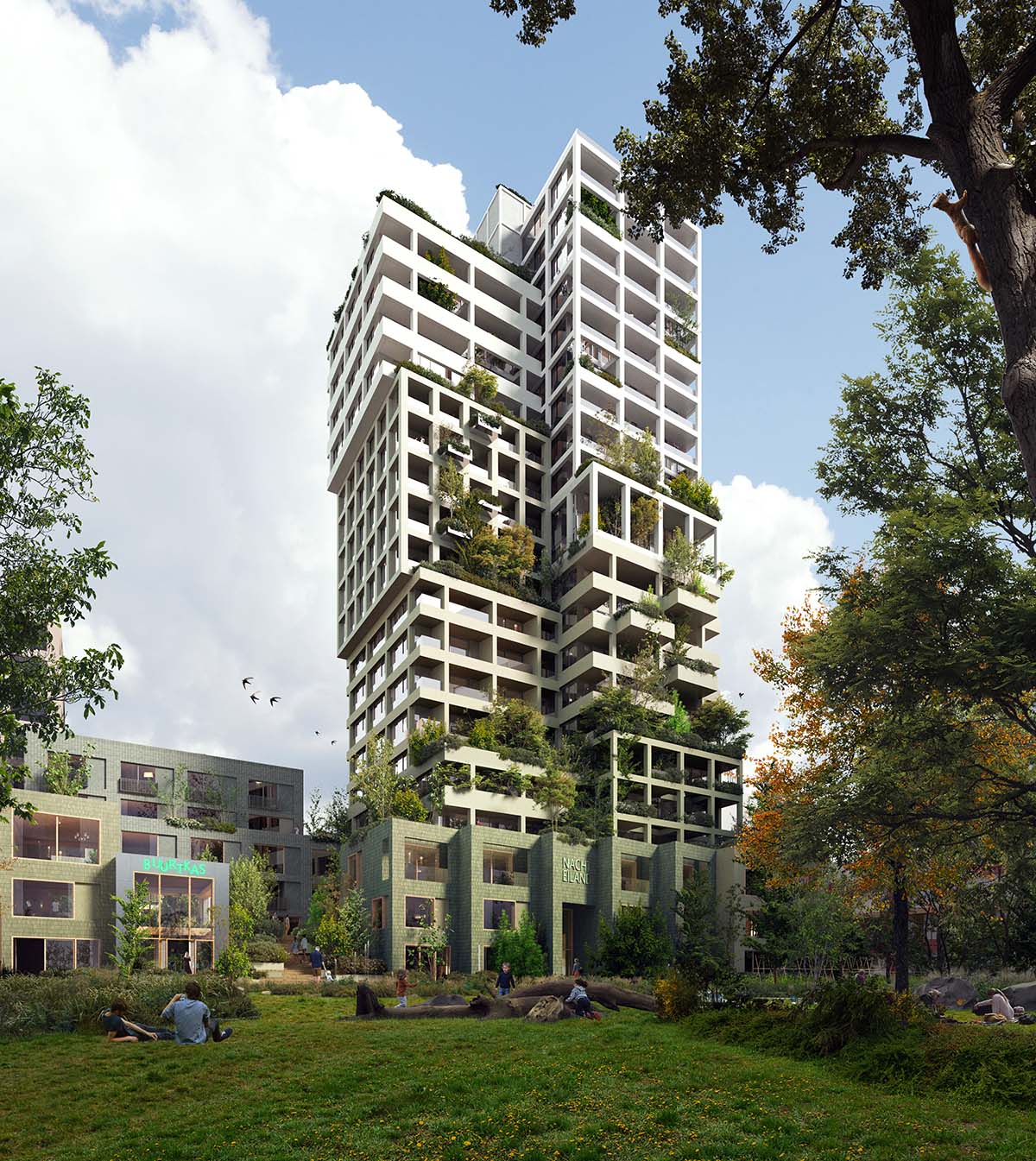
MVRDV and Space Encounters have won a competition to design a new residential tower in Amsterdam’s Sluisbuurt neighbourhood, the Netherlands.
Called Nachteiland, the 22-storey tower is developed in close collaboration with two offices, MVRDV and Space Encounters, in all parts of the design. The scheme aims to offer an example in an under-construction neighbourhood that has sustainability and greenery as its core principles.
The design team of two architecture offices envision a wooden structure, with energy-producing façade, and abundant green and communal spaces.
The tower will consist of 153 flats, and 60 of units will be reserved for mid-sector rental – with a focus on apartments catering to urban households, helping to address shortfalls in Amsterdam’s current housing provision.

"A collection of different neighbourhoods"
Nachteiland means "night island" in Dutch, according to MVRDV. The name references to the work of choreographer Rudi van Dantzig after whom the neighbourhood’s main street is named. The building is designed for the real estate partnership of LOCUS Real Estate Development and Miss Clark.
Located at the heart of the Sluisbuurt, between Rudi van Dantzigstraat and a small pocket of greenery, the project is enhanced with a diverse range of apartments, while retail units are expressed in its visual appearance: the team develops the shape of the building in a series of blocks which "act as like a collection of different neighbourhoods."

These blocks are positioned side-by-side at ground level to form the plinth, and vertically to form the tower above.
"Along Rudi van Dantzigstraat, the plinth is constructed out of blocks of three to six storeys, echoing the sizes of neighbouring buildings and hosting a series of double-height spaces for shops and cafés," said MVRDV.
"On the side of the pocket park, the plinth is broken up even further to create a series of townhouses, which are punctuated in the middle by a communal greenhouse and a broad green staircase that extends the greenery upwards to a first-floor courtyard in the heart of the plot," the firm added.
Reaching at 70 metres, the project is built up of blocks that gradually increase in size towards the top of the tower, with varying facades and outdoor spaces to underline the diversity of apartments within. On the other hand, the lower half is dedicated to the project’s mid-sector rental properties, offering excellent access to the communal rooftop spaces which top the plinth.
Many of these rooftops will feature pergolas to support solar panels, allowing accessible spaces where relaxation coexists with energy generation.
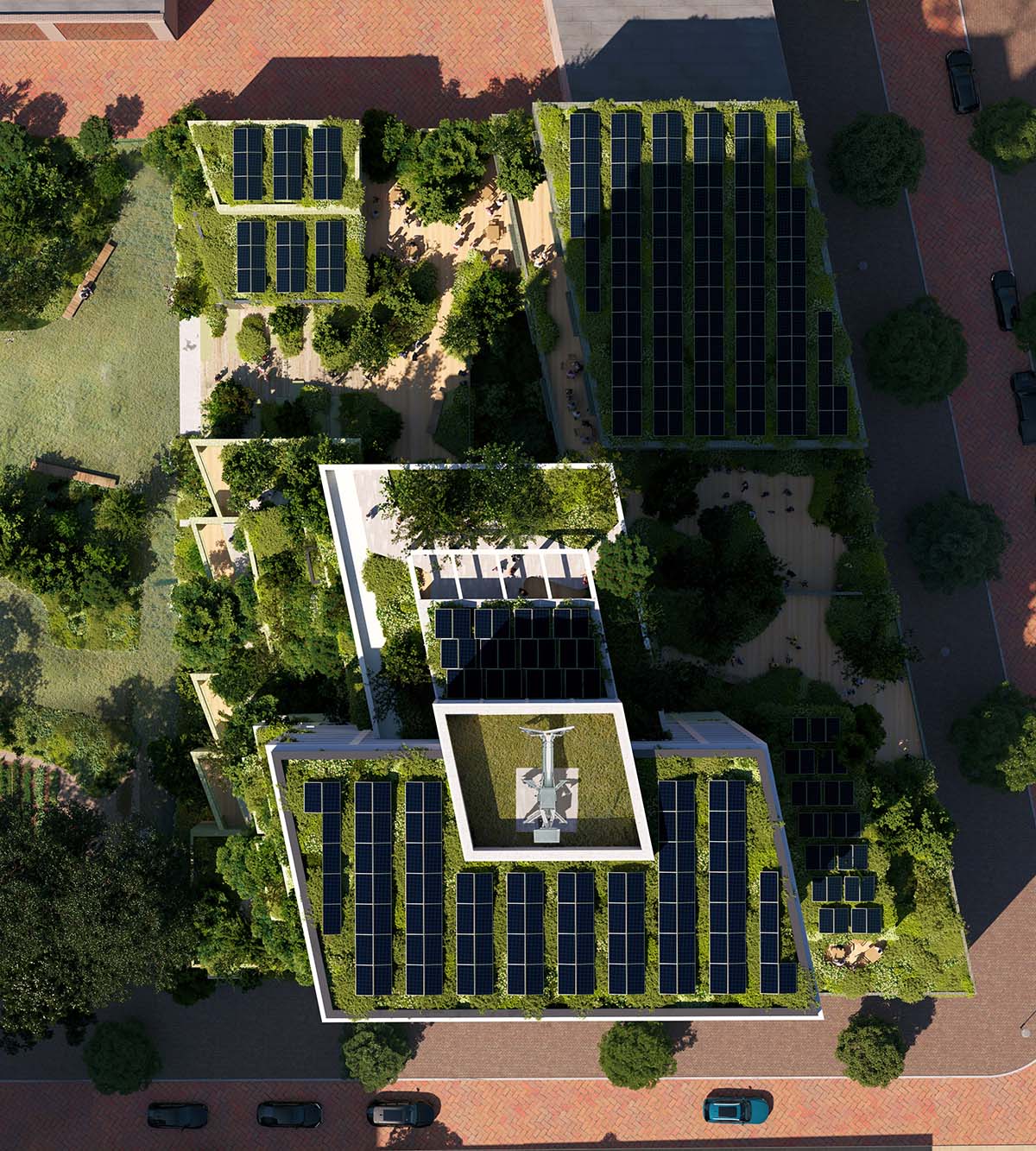
The façade of the tower will feature a different type of solar panel, using building-integrated photovoltaics (BIPVs) that combine solar energy generation with a tasteful green finish.
The design gives references to the neighbourhood’s location with complementary east and west façades. "Seen from the east, with central Amsterdam as the backdrop, the building is relatively urban and formal in appearance; from the west, the building is more segmented and adorned with greenery, hinting at the smaller, low-rise homes and the green fields that lie beyond, to the northeast of Amsterdam," said MVRDV.
"This project is a demonstration that in addressing our housing crisis, sustainable design doesn’t need to be a ‘nice-to-have’ – it can be central to the design itself," said MVRDV founding partner Jacob van Rijs.
"As one of the most visible projects within this new neighbourhood, we are excited to set the benchmark for what can be possible in a community where greenery and sustainability are the central principles," Van Rijs added.

"We succeeded making a tower that sets a new unique mark in the Sluisbuurt, showing different faces from different perspectives," said Joost Baks, founding partner of Space Encounters.
"It’s inspired by an art piece created by Joost Baljeu in 1978, which has this same quality. In this way, the view of the tower shifts between a sharp urban silhouette and a vertical green stepped landscape," Baks added.
The project has ambitious targets for energy production and consumption. According to the team, "tall buildings are often difficult to make energy-neutral due to their relatively low roof surface area available for solar panels."
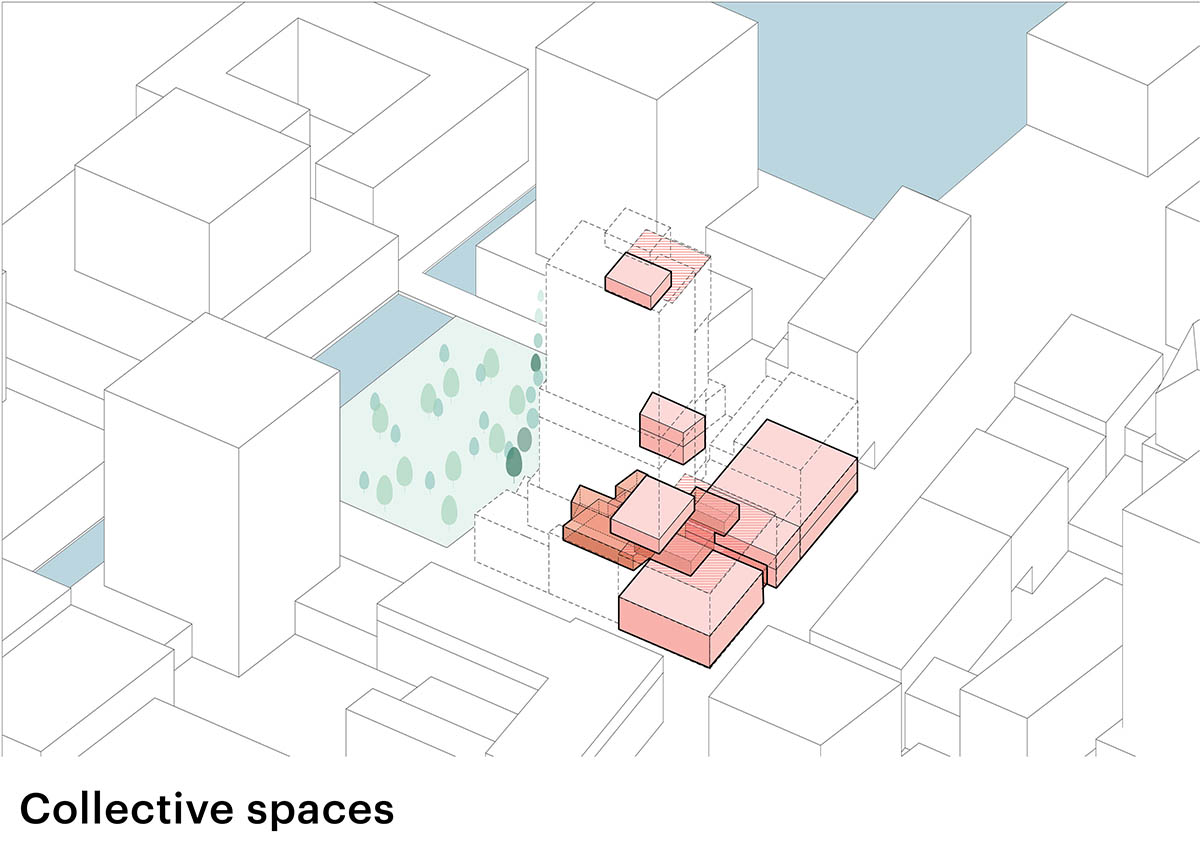
However, in the case of Nachteiland, this will be compensated with the building-integrated photovoltaics to make up the difference, that's why, the design team describes the building "energy-positive". The building is expected to "produce 3.03 kilowatt hours per square metre per year more than it uses (a BENG 2 rating of -3.03)."
Besides energy measures, the team pursues similar calculations for both bio-based and circular-economy materials. The structure of the building will be built up almost entirely with wood, while concrete will only be used in the structural core and the columns of the tower up to the sixth floor.
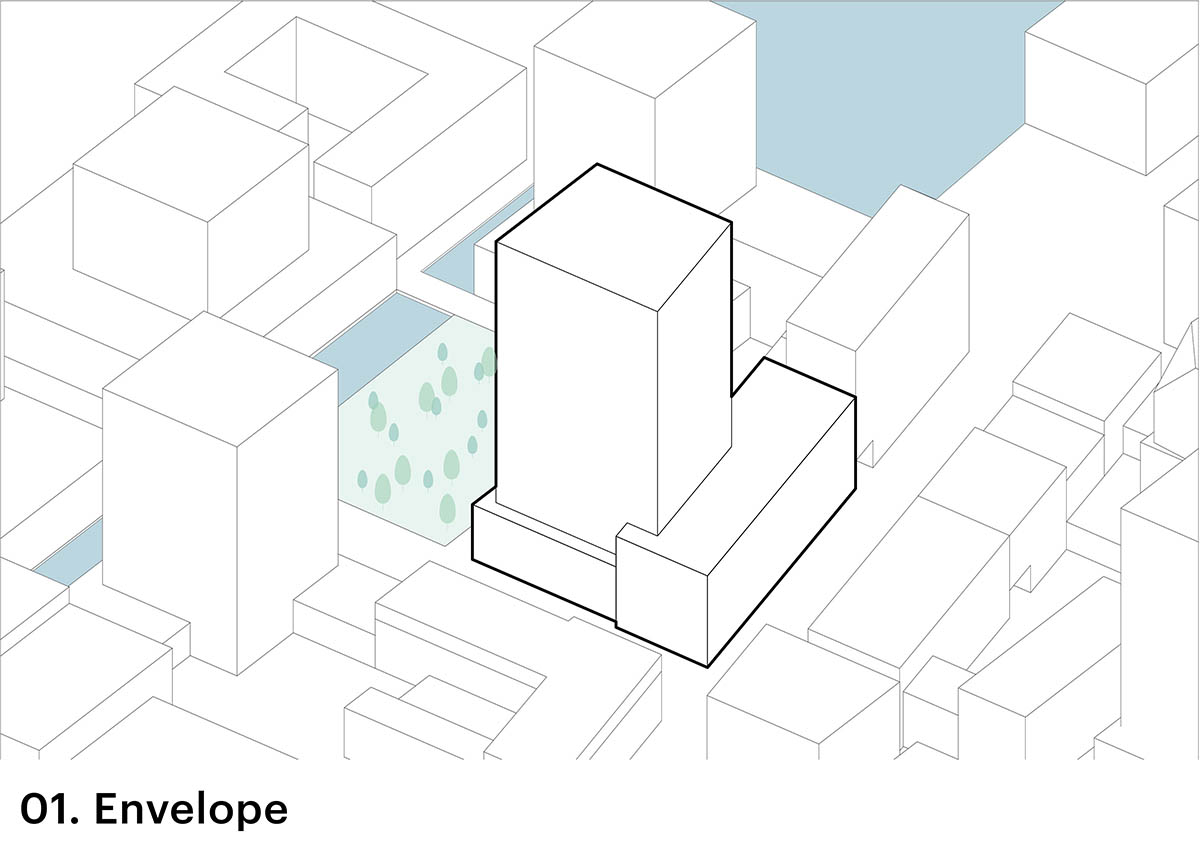
As the design team noted, this shows that 61 percent of the building’s materials will be bio-based, while 13 percent will be recycled. "Combined with the project’s demountability strategy these measures give the building a Building Circularity Index (BCI) score of 61 percent," the team explained.
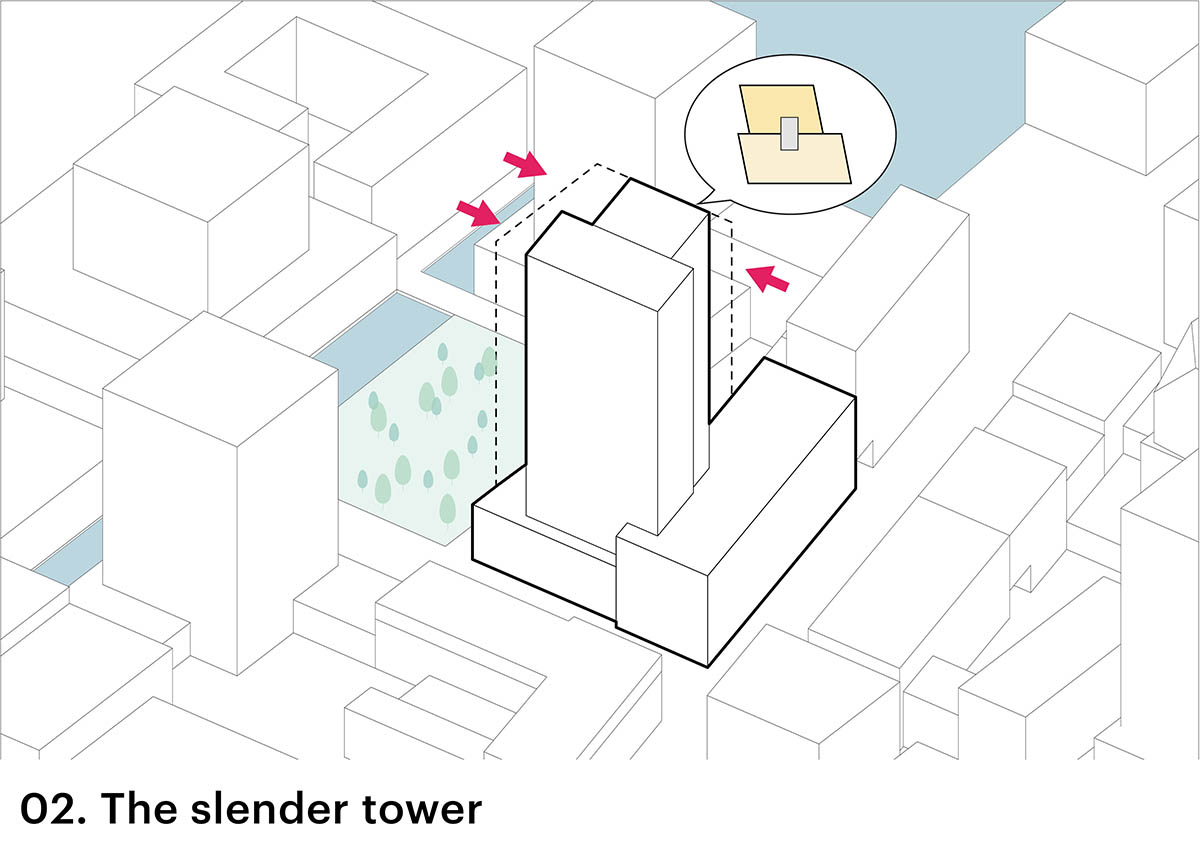
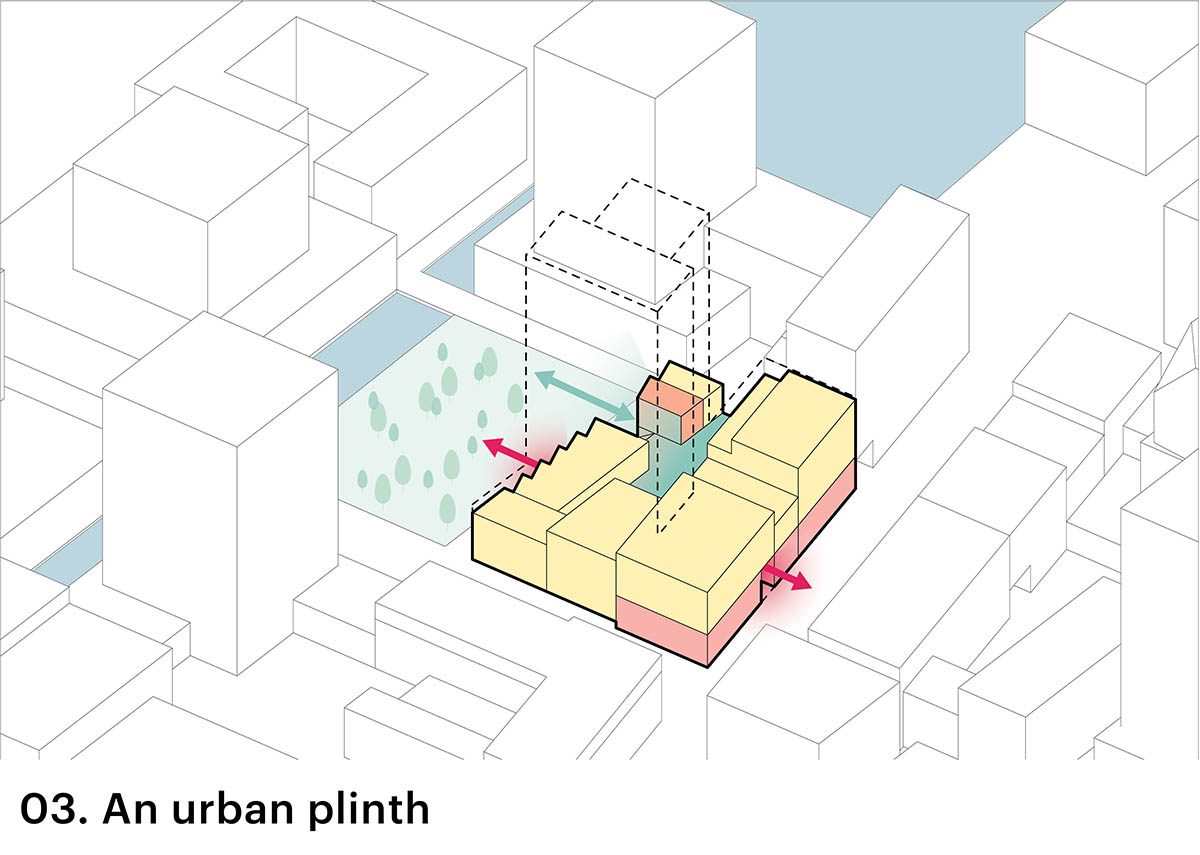
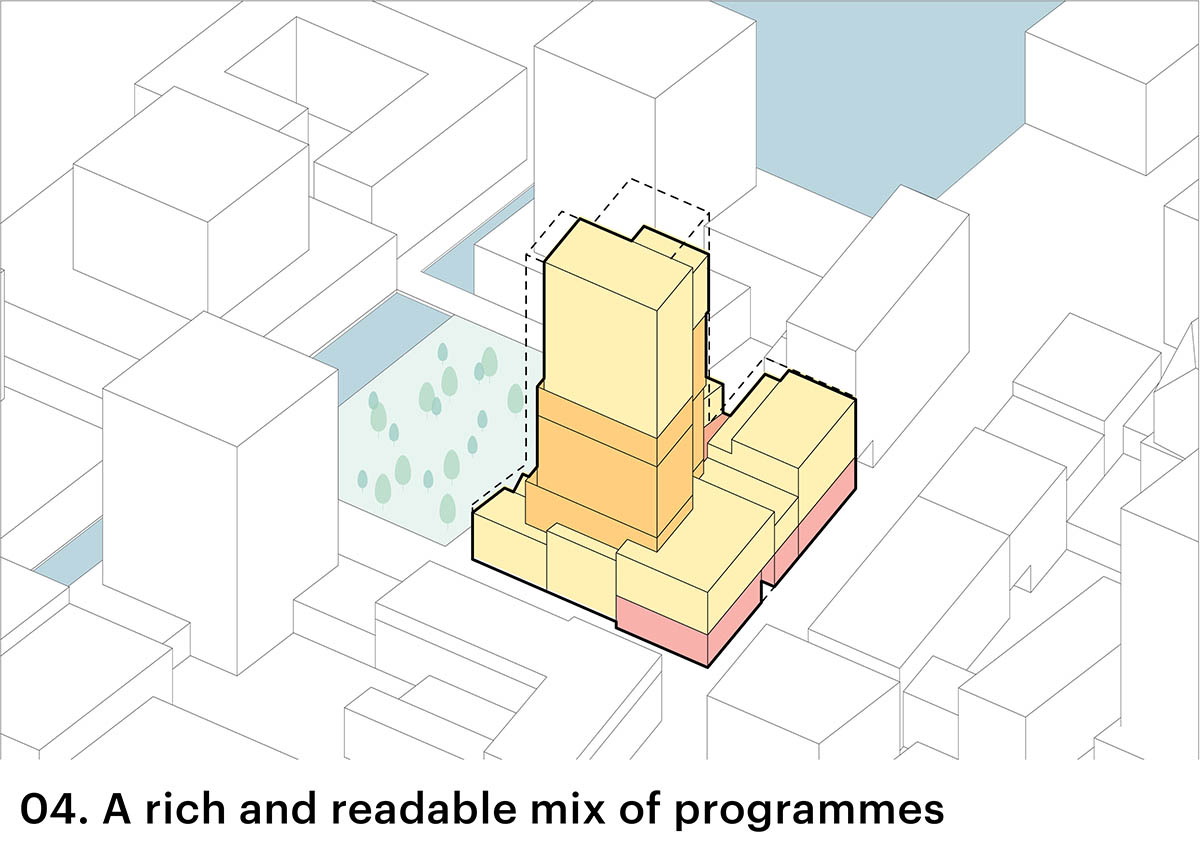

The landscape of the project will be developed by Delva Landscape and Dura Vermeer will act as contractor.
MVRDV completed the redesign of The Pyramid of Tirana, dedicated to the communist dictator Enver Hoxha, as a monumental "open sculpture" in a new park in Tirana, Albania.
In addition, the firm created one-of-a-kind façade made up of recycled ocean plastics for the Tiffany & Co. store at Changi Airport in Singapore.
Project facts
Project name: Nachteiland
Location: Amsterdam, the Netherlands
Year: 2023–
Client: LOCUS Real Estate Development + Miss Clark
Architect: MVRDV + Space Encounters
MVRDV Founding Partner in charge: Jacob van Rijs
MVRDV Director: Gideon Maasland
MVRDV design team: Gijs Rikken, Bob de Rijk, Bin Wei, Yue Shi, Agata Holdenmajer, Lorenzo Mennuti, Bin Wei, Yue Shi
Space Encounters design team: Joost Baks, Gijs Baks, Patricia Yus, Teun Smits, Hyemi- Lee, Dorine Vos, Hyemi-Lee, Michael Schuurman
Partners
Contractor: Dura Vermeer
Project coordination: De Mannen van Schuim
Landscape architect: Delva
Structural engineer: Buro Happold
MEP & Building Physics: Peutz
Environmental advisor: DGMR
Facade engineering: Frontwise Facades
Mobility: Hely
BENG and BCI calculations: DGMR
Model: Made by Mistake
All visualizations © Proloog.
> via MVRDV
Amsterdam concept MVRDV residential tower Space Encounters tower
